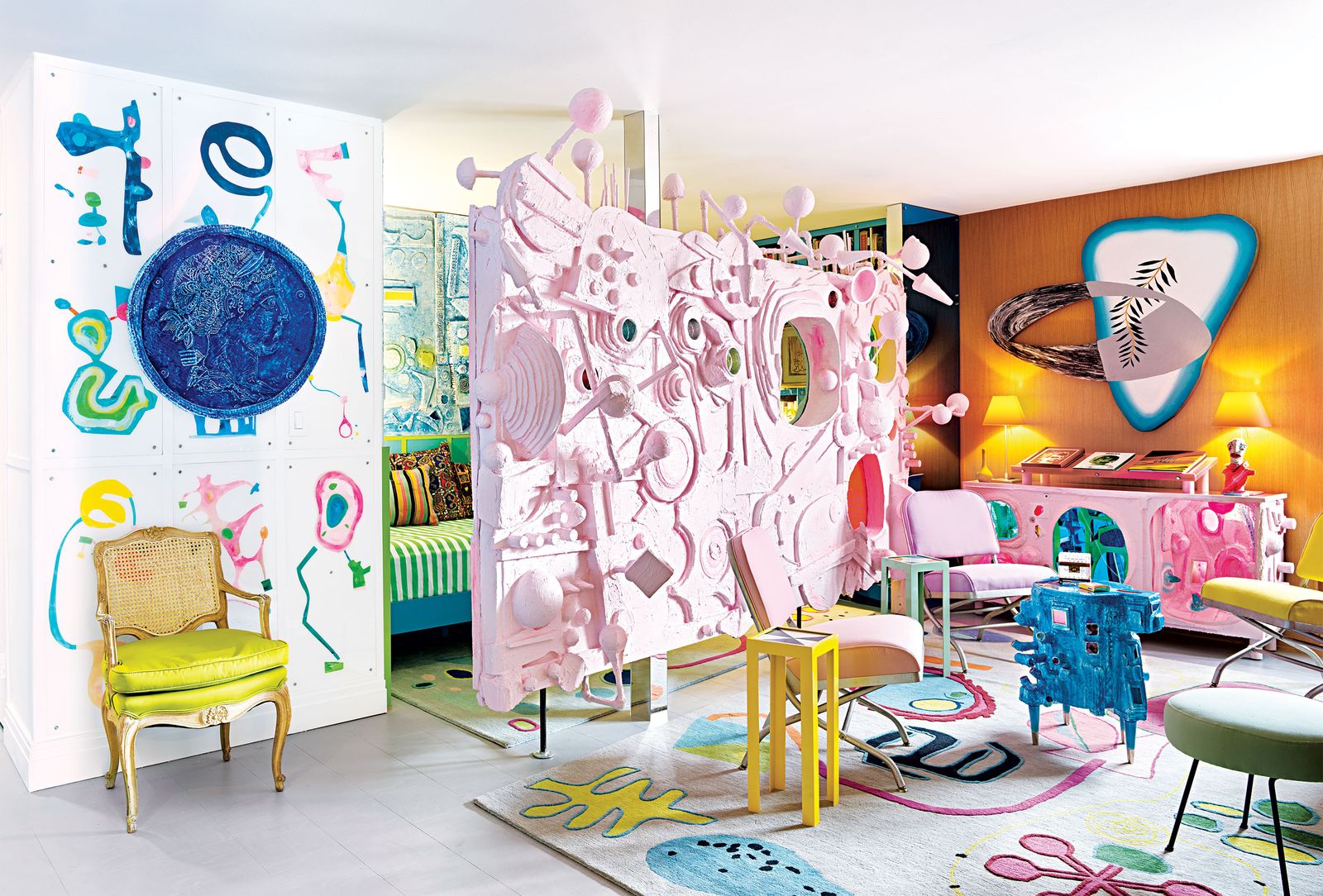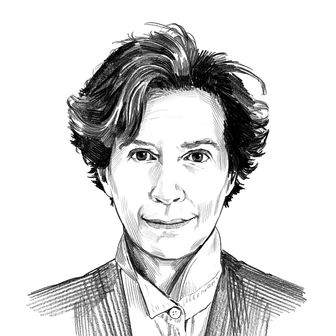Artist Doug Meyer’s last apartment was clad in paper — not wallpaper by the roll but rather individual pieces of colored paper that he printed and applied by hand, all 2,398 sheets. For his latest project, a co-op in the Chelsea Mutual Redevelopment Houses, a.k.a. Penn South, that he shares with his husband, Meade Ali, Meyer was no less ambitious. First he opened up the kitchen and redid the floors. But the living room is where he let loose, dividing the space with a curved, freestanding wall sculpture. “It looks like a beautiful glazed-pottery surface,” he says. He then added “portals in the wall that allow you to see into the other room through colored Plexi, creating this kind of view into another world.” Strewn throughout the apartment are rugs that Meyer created out of “some strange complication of my love for geometrics, botany, and microorganisms.”
His life and friendships spanning decades in New York also feed into his art. (In fact, he has a coffee-table book out in May, Heroes: A Tribute, celebrating artists lost to the aids crisis.) Working for art dealer Holly Solomon in the ’80s left a mark on Meyer’s aesthetic. “Holly’s Sutton Place apartment taught me that rooms can become livable works of art,” he says. The idea for using red-oak veneer on the walls goes back to his memory of a cocktail party at a U.N. Plaza apartment designed by Angelo Donghia. While the layperson might consider the apartment one big sensory overload, Meyer finds it calming: “Walking into the library feels like entering this fish tank designed by Salvador Dalí — it’s the most quiet and relaxing space to be in, especially to read a book.”
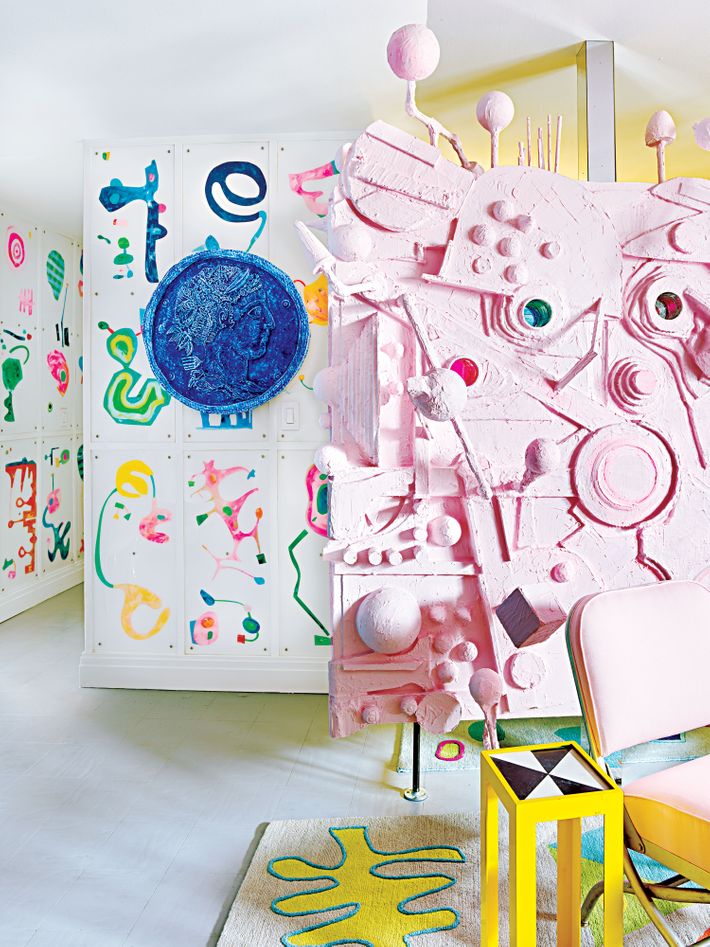
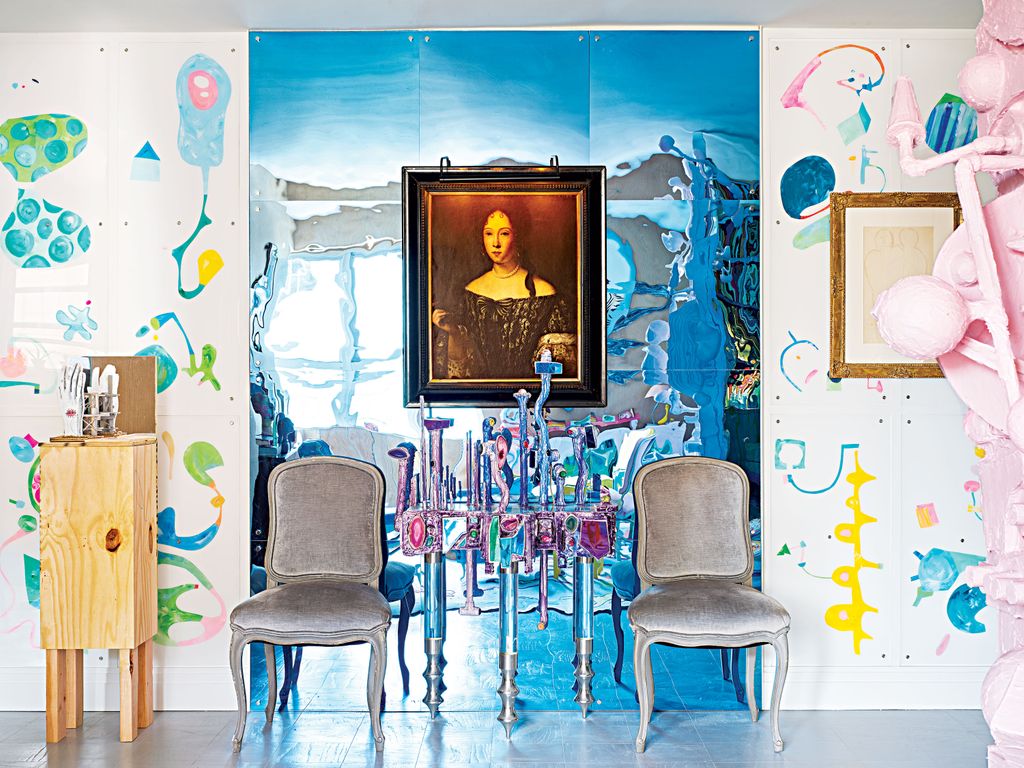
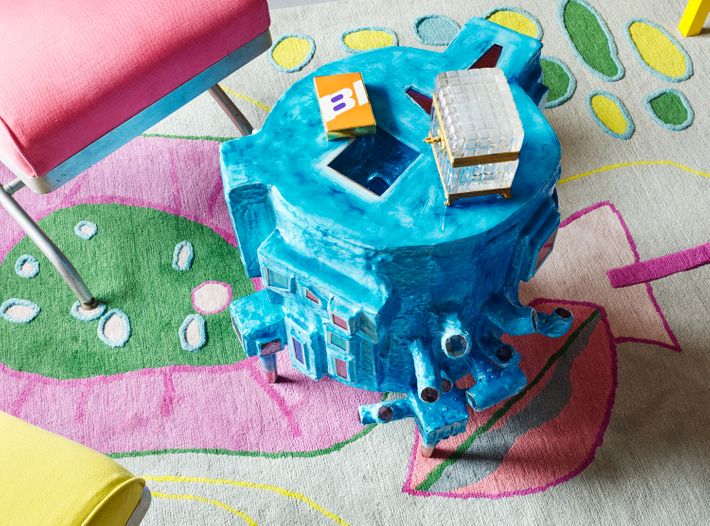
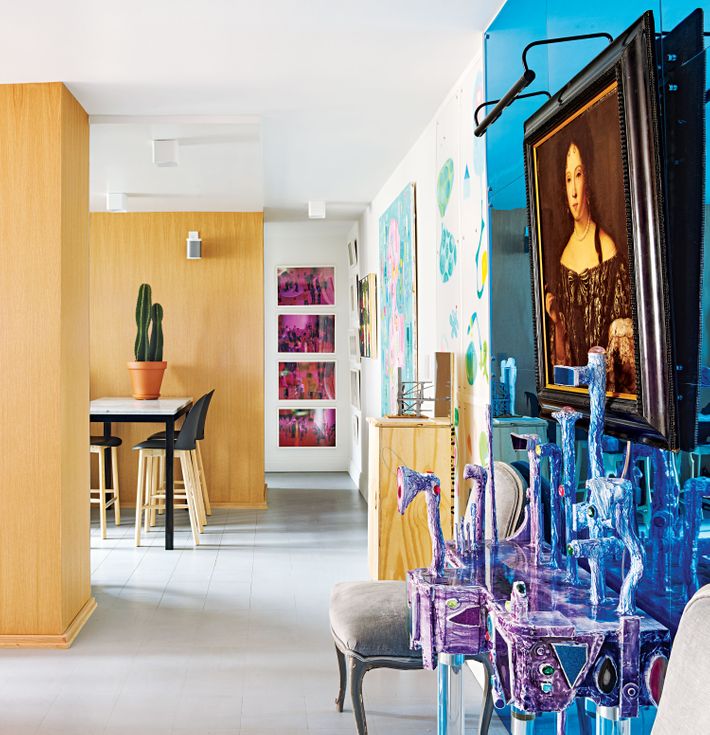
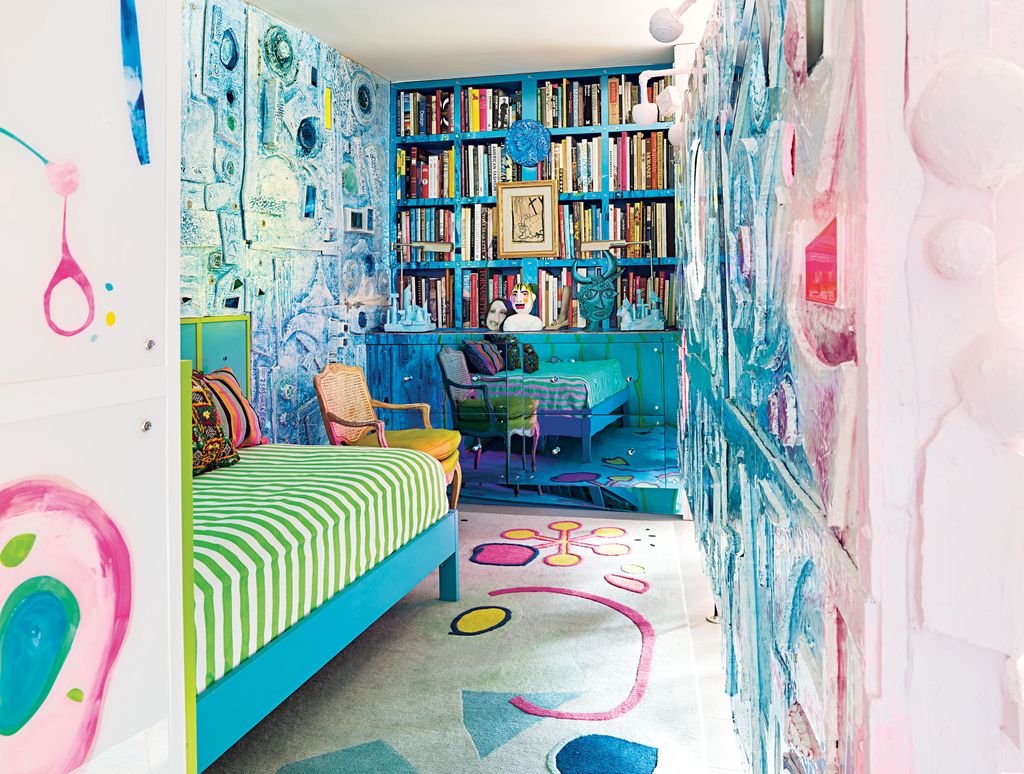
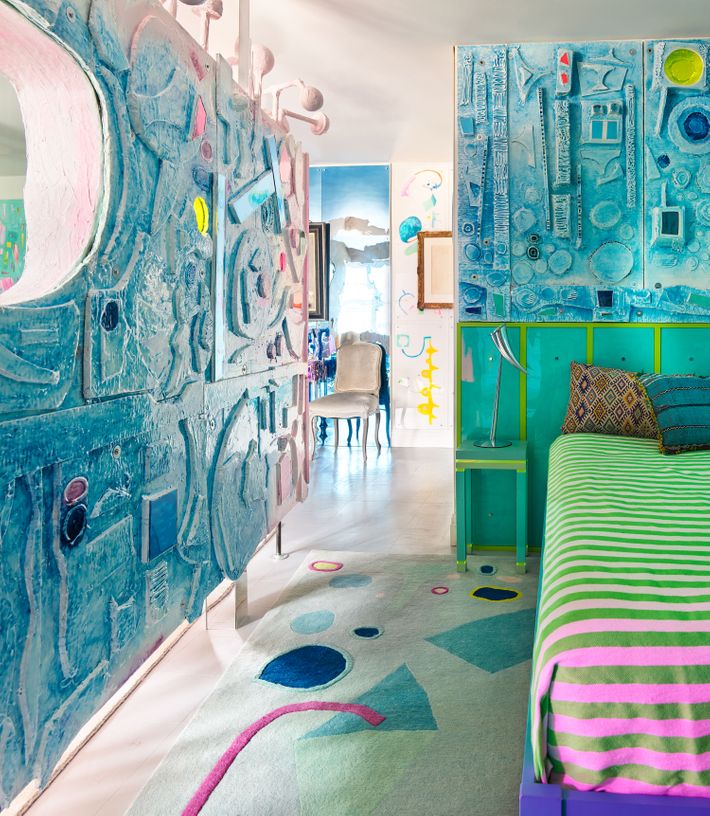
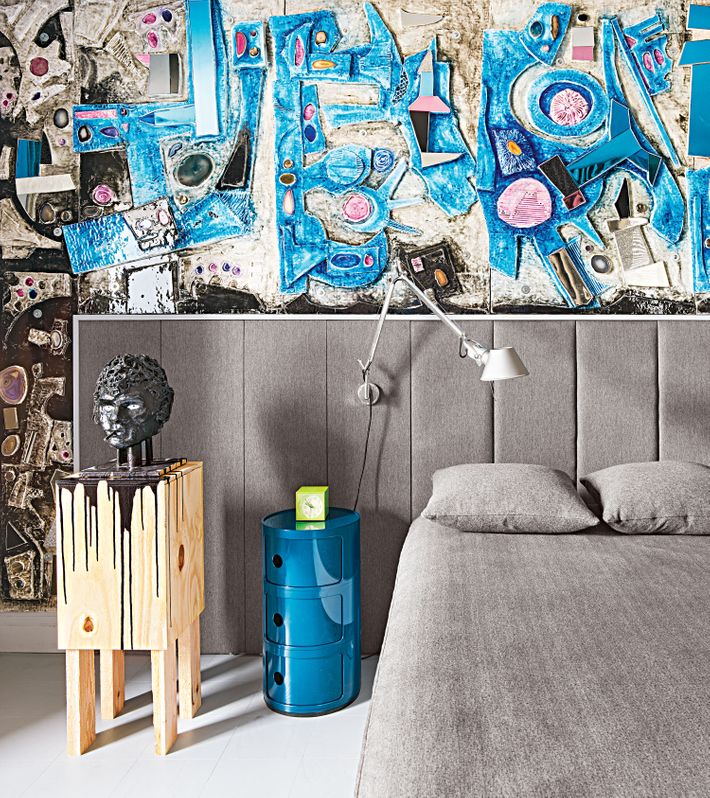
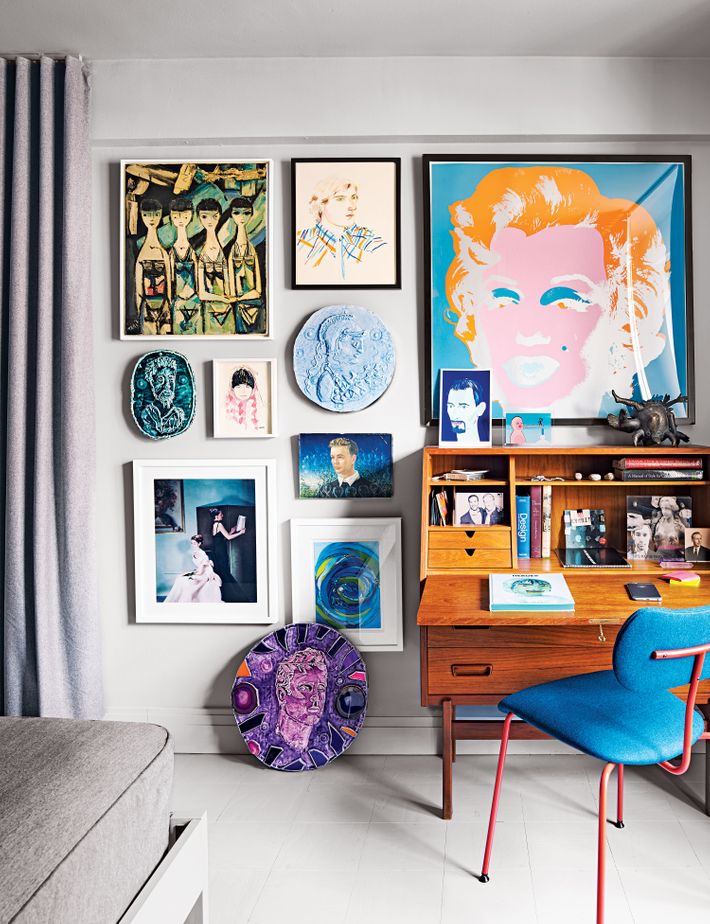
*A version of this article appears in the April 16, 2018, issue of New York Magazine. Subscribe Now!
